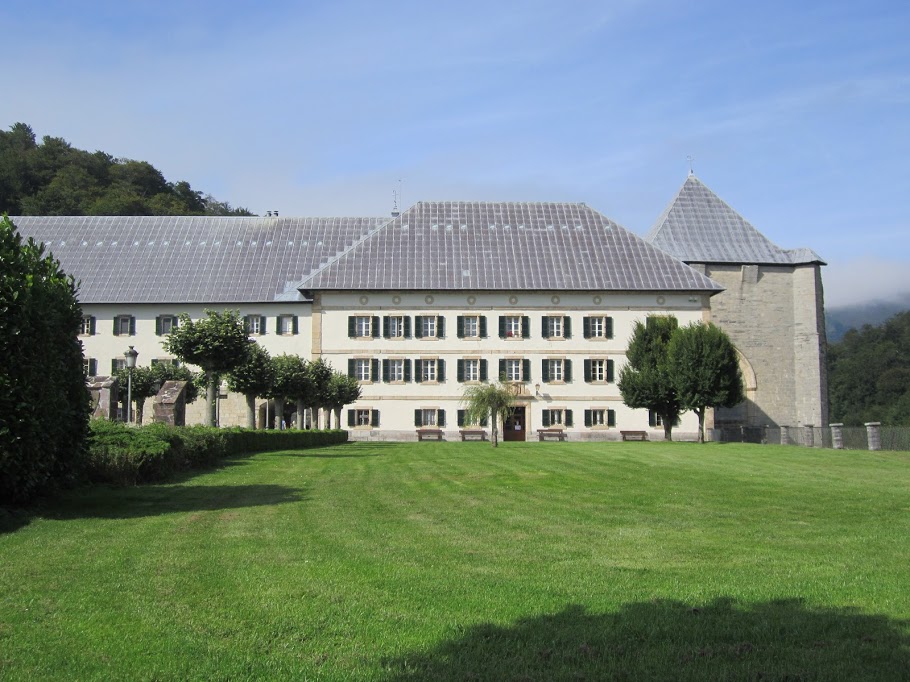THE ALBERGUE IN RONCESVALLES
You check in at the door, where a kindly man about my age, who may or may not be some sort of priest, guides you in flawless English through the process. He explains the rules, shows me where and how to check in and make the small required donation for a bed for the night (10 euros), and warns me to get a dinner reservation at the restaurant around the corner soon, as it fills up quickly and then turns people away. The check-in process goes smoothly. I am assigned a numbered bed in a cubicle for four people, which is standard here. The idea is to find your bed, claim it by leaving your backpack there, and then head out to explore the tiny surrounding area and arrange for dinner.
But first, there is the all-important Shoe Rule. If I knew it before getting here, I had forgotten about it. NO SHOES ARE ALLOWED IN THE ALBERGUE. No exceptions!
Thus, once inside the building, the first thing you encounter is the Shoe Room. It is a long, narrow, windowless room with multiple layers of shelves all around the walls. They contain hundreds of pairs of shoes, left there by those who are staying upstairs in the beds. You are required to take off your shoes and leave them here whenever you enter.
I am sure that you have at times entered a place where everyone but you already understands the language, and you are left mortified by your stupidity in arriving without knowing a word of it. That is me, realizing while entering that everyone else knows to bring a pair of sandals, even the cheap plastic kind. Not me. As a result, my choice is either to spend the evening upstairs walking around in bare feet, or to flout the Shoe Rule. I decide to take my chances getting upstairs with my shoes, until I see that a sentry is posted at the foot of the stairs, checking every pair of feet that goes by.
So, I enter the shoe room—and immediately gag. It smells worse than a slaughterhouse, or a tannery. It is worse than a thousand farts in church. It is overpowering. But I survive. I find a place for my shoes and bolt from the room. It occurs to me later to worry about the possibility of a shoe thief who gets up early in the morning and wants a free upgrade. More plausibly, someone may grab the wrong pair in the morning darkness and not discover it until hours later, once the sun rises. These are the chances that we all must take to make this kind of trip.
Other than the shoe room, everything else in the albergue is modern, and spotlessly clean. That is a bit remarkable, considering that it houses 183 tired and sweaty hikers, with an overflow capacity for another 100 in a big dormitory next door.
The rest of the evening is uneventful. Mediocre dinner at the restaurant next door. Then coming back early, meeting the other cellmates in my four-person “cubicle,” and preparing for sleep. I am housed for the night with two shy girls in their early 20s, one a German and one Swedish. They smile shyly, and say a few words of polite introduction. The other person, sleeping in the bunk above me, is an older, sour woman from Finland, who says nothing.
Who would have thought that I would spend my first night on the Camino “sleeping with” three women? Stranger still, who would have thought that a Catholic monastery in a once virulently conservative Catholic country would place young women and old men together for the night in a consecrated place? Not that I object. I am just trying to learn the code of the Camino, which is different from anything I have experienced before.
